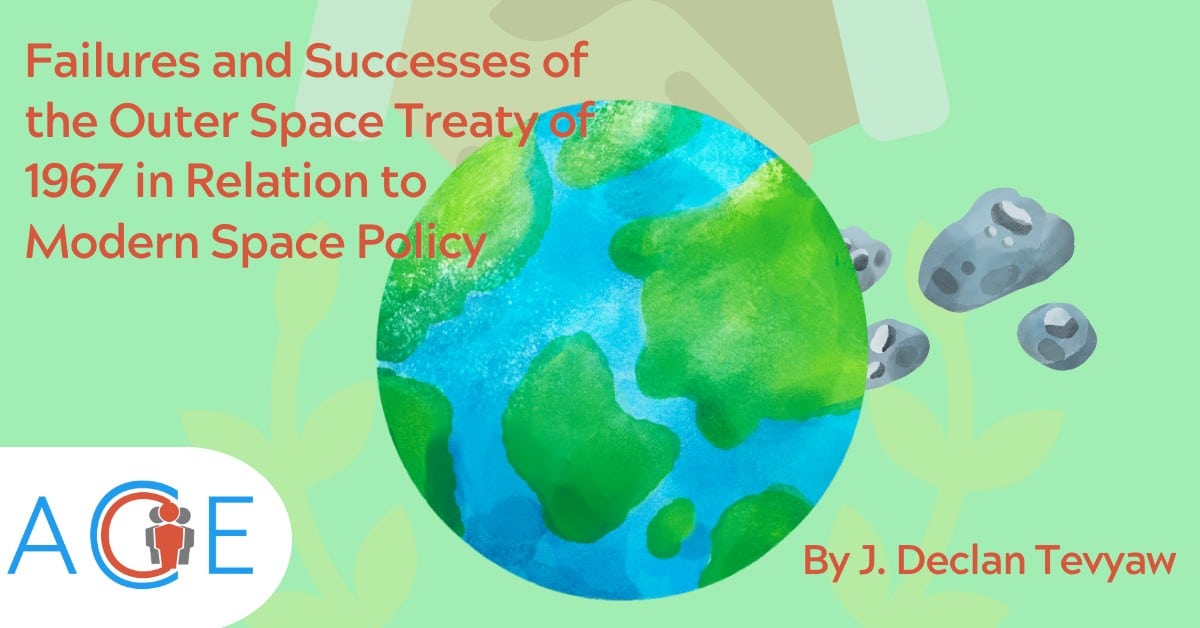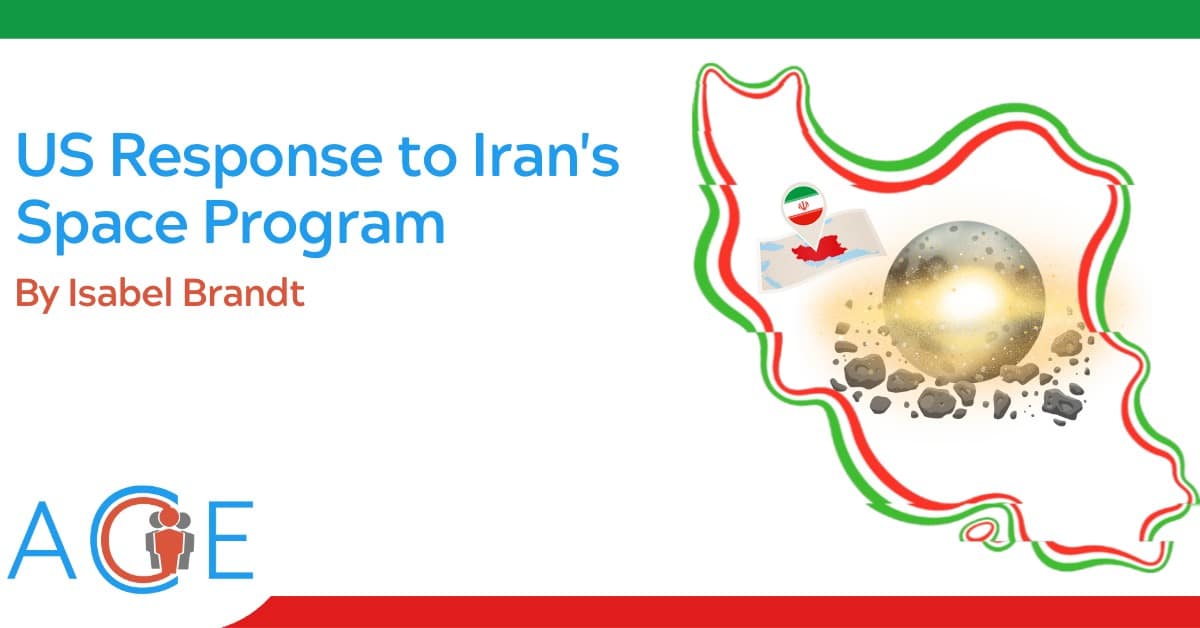Since the inception of space exploration, numerous countries have aimed to harness the potential of this vast and unclaimed domain. At the outset of the Space Race, the United States and the Soviet Union recognized the imperative of establishing regulations to curtail the escalation of nuclear arms technology. This Space Race was initiated to curb the proliferation of nuclear weaponry through destructive satellites, a novel security concern for both nations. The Outer Space Treaty of 1967 (OST) was formulated and ratified by a majority of countries globally, with its key provisions ensuring that:
- No sovereign nation can lay claim to an area of outer space or any celestial body
- Weapons of mass destruction cannot be stationed in space
- The Moon and other celestial bodies must be used for peaceful purposes
- Outer space must be used for the benefit of all mankind
- States are liable for damage they cause in space
Under the terms of the Treaty, disputes or violations are mediated within the United Nations. However, there is no obligation for any country within the UN to mediate such a dispute, and questions exist about how effectively this could be done if needed. The OST remains the main governing legislation over space travel and exploration, and the further development of technology and increasing use of outer space makes it more relevant every year.
Successes of the Outer Space Treaty
The Outer Space Treaty has been in effect for more than five decades, and it is currently recognized by 136 countries. The treaty aimed to serve as a foundation for future space laws, designed to accommodate new space-related developments. Since then, additional treaties were established in 1968, 1972, 1976, and 1984 to further build upon the principles laid out in the OST.
On the global stage, the Outer Space Treaty (OST) was initially drafted as a bilateral accord between two nations with strained relations. It has been suggested that this treaty could potentially serve as a means to mend bilateral ties between China and the United States. When the OST was formulated, the Soviet Union and the United States were engaged in a confrontational dynamic, yet the treaty laid the groundwork for subsequent agreements in space law, with a focus on preventing nuclear proliferation. This historical precedent could become particularly significant in light of recent heightened international tensions. The annexation of Ukraine by Russia led to the abandonment of various non-proliferation agreements, such as the New START treaty. Furthermore, in January 2023, a Chinese surveillance balloon entered U.S. airspace and remained aloft for seven days before being brought down. The OST’s track record demonstrates its potential to foster beneficial international agreements beyond its own scope, and it holds the promise of once again being utilized as a framework for productive international collaboration.
One crucial provision of the treaty limits the exploitation of space resources, an issue becoming increasingly important with the commercialization of space. The words of the treaty are clear, stating that “outer space, including the moon and other celestial bodies, is not subject to national appropriation by claims of sovereignty, by means or use of occupation, or by any other means.” The celestial bodies in our solar system hold a plethora of resources fit for human use, such as limitless solar energy, fresh water from asteroids, and valuable matter that is extremely rare or even nonexistent on Earth. These resources have the potential to bolster the global economy and aid in scientific discovery in the near future. Additionally, utilizing these resources on other planets or celestial bodies could give us the ability to make space travel more economically viable and common, and it would aid in extending the range of human influence to a solar level. The provisions of the treaty guard these valuable resources from being appropriated by any one nation or party, as it was agreed upon that they must be used for the benefit of humanity. The treaty also uses intentional vagueness to safeguard against loopholes and misinterpretations, most strongly in Article II. The term “or by any other means” was intentional; it acts as an umbrella term that has strong preventative authority over any avenue of national appropriation, such as enforced claims of sovereignty rather than physical occupation. No territorial claims can be laid or enforced on any celestial body, ensuring that their use will not be exclusive to any specific party.
Failures of the Outer Space Treaty
The ambiguity of the Outer Space Treaty has been used effectively in certain areas, but some experts find it lacking in other areas. As space becomes more commercialized, private companies will be accountable for an increasing share of spacecraft in an industry historically monopolized by government agencies, especially within the United States.
An emerging concern related to space utilization is the escalating pollution of outer space with debris that lingers in orbit indefinitely. The Federation of American Scientists reports that there could be as many as 170 million fragments of debris currently orbiting the Earth, posing a potential threat to future space travel originating from our planet. The growing accumulation of space debris in low-earth orbit brings about challenges in terms of tracking and managing, thereby impeding upcoming space missions. Moreover, as the volume of space debris increases, the likelihood of collisions among these orbiting fragments rises. This generates smaller fragments that can then collide with existing debris, perpetuating a cyclical process known as the Kessler Syndrome. There is a theoretical risk that this scenario could eventually trap humans on Earth, rendering safe exit from the atmosphere unfeasible due to an uncontrollable buildup of space debris.
As stipulated by the Outer Space Treaty, nations bear responsibility for the debris they generate, even if it’s the result of activities conducted by non-governmental entities. This implies that any damages caused by debris could be attributed to the home nation of the private organization accountable for producing the debris. However, this framework becomes precarious due to the fact that the Liability Convention within the Outer Space Treaty establishes a liability system based on fault for space-related damages, yet it does not offer a precise definition of “fault.” The absence of a clearly defined legal standard highlights both the obstacles arising from the ambiguity present in the Outer Space Treaty and the capacity of private and governmental entities alike to evade liability.
The OST grapples with a lack of precise definitions in certain provisions, notably concerning the demarcation between international airspace and outer space. This shortfall is particularly significant as nations can lay claim to sovereignty over airspace but not outer space as delineated in Article I of the treaty. Since there is no consensus on the specific elevation at which national airspace ends and outer space begins, the OST’s capacity to prevent claims to areas in low-earth orbit becomes questionable. This issue gave rise to a brief international policy crisis known as the Bogota Declaration. The declaration sought to assert control over the outer space directly above equatorial countries like Ecuador, Colombia, Congo, Zaire, Uganda, Kenya, and Indonesia. These nations contended that the equatorial space was a natural resource not falling under the definition of outer space provided by the OST, and their aim was to assert sovereign rights over this area. Although the Declaration ultimately lacked international recognition and failed, the risk of sovereign claims over space persists. The lack of substantial action to address this issue before it fell apart suggests that limited means exist to enforce the treaty’s provisions if a similar situation arises.
Certain articles of the treaty are also frequently circumvented, with the most notable example involving the development of nuclear weapons delivery systems through non-weapon space propulsion technology. This approach allows countries to indirectly test the performance of weapons delivery systems through ostensibly peaceful spaceflight. This practice circumvents the prohibitions outlined in Article IV of the treaty, which stipulates that outer space must be used for peaceful purposes and prohibits the deployment of nuclear weapons in orbit. This design strategy was prominently employed by India in the development of its first ballistic missile, the Agni-I. This was achieved through cooperative efforts involving the United States, France, Germany, and Indian rocket scientists, who were provided with key design elements from technology being developed for peaceful purposes. The Agni series of missiles, India’s largest nuclear-capable missiles, emerged solely from the cooperative work of rocket scientists with no immediate aim of nuclear proliferation.
Relation of the OST to Private Space Commercialization
The Outer Space Treaty’s blend of legal strengths and weaknesses lends itself to a relatively flexible interpretation within the realm of legal space commerce. If a private entity were to violate any of the provisions outlined in the treaty, it is doubtful that the United Nations would be able to effectively enforce it, given that “in practice the United Nations has never been able to fully develop into an effective dispute settlement system.” This allows corporations to consider the legal consequences of their actions later, which gives leeway to focus on commercialization and expansion first. The guidance established in the Outer Space Treaty was drafted at a time when space exploration was exclusively scientific, and it opened up a universe of opportunities to obtain space capital. The policy of most private spacefaring corporations is “whatever is not prohibited is legal” which is creating an emerging industry that will likely be the source of major economic growth and development in the near future.
Opportunity for capitalization is plentiful, notably in the future industry of asteroid mining technology, the next expected development in spacefaring economies. It has been proposed that asteroids could be mined for rare elements such as platinum, and development of this technology began in 2006 when Planetary Resources started work on this long-term goal. Asteroids are rich in valuable minerals and elements, and a platinum-rich asteroid 500 meters wide is estimated to hold approximately 175 times the annual global platinum output. Planetary Resources was bought out recently by Consensys Space, who then released all asteroid-mining development information for public use. Asteroid mining technology is still in the development stage and has the potential to be monopolized by whoever deploys it first, whether an American company or our international competitors. This industry holds the capacity to contribute trillions of dollars to the worldwide economy. However, an issue of international dispute could emerge if a single nation gains exclusive control over asteroid-mining technology and the associated advantages. Although asteroid mining might not be immediately feasible, its significance in global space law is expected to grow over the next several decades.
In April 2022, the White House declared that the U.S. government would cease engaging in kinetic tests of anti-satellite weaponry. Nonetheless, the development of anti-satellite weapons without kinetic space testing would persist. Private defense contractors, such as Lockheed Martin and Northrop Grumman, are likely to undertake this development, with the intention of deploying these weapons if a satellite threat materializes in the future. This decision appears to be aimed at curbing the creation of space debris for which the United States would be held accountable, while enabling ongoing research and development of anti-satellite weaponry. In 2022, the United States spent an estimated $877 billion dollars on defense, more than the total defense spending of the closest ten countries, combined. Of that, $18 billion went to the United States Space Force, and this organization requested $30 billion for the 2024 fiscal year, more than a 66% increase in spending within two years.
Private space travel is also an increasingly lucrative business, with companies already working to get an edge in this loosely regulated sector. NASA recently granted private spaceflight to the International Space Station, and three passengers aboard a privately owned SpaceX rocket have paid $55 million each for a trip to the ISS. In the coming years, space policy will become increasingly consequential, and policymakers will need to formulate regulatory frameworks that will decide what stake private companies will have in space.



